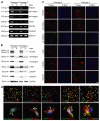Repair of tissues by adult stem/progenitor cells (MSCs): controversies, myths, and changing paradigms
- PMID: 19337235
- PMCID: PMC2835176
- DOI: 10.1038/mt.2009.62
Repair of tissues by adult stem/progenitor cells (MSCs): controversies, myths, and changing paradigms
Abstract
Research on stem cells has progressed at a rapid pace and, as might be anticipated, the results have generated several controversies, a few myths and a change in a major paradigm. Some of these issues will be reviewed in this study with special emphasis on how they can be applied to the adult stem/progenitor cells from bone marrow, referred to as MSCs.
Figures




References
-
- Uccelli A, Moretta L., and , Pistoia V.Mesenchymal stem cells in health and disease Nat Rev Immunol 2008. epub ahead of print - PubMed
-
- Parr AM, Tator CH., and , Keating A. Bone marrow-derived mesenchymal stromal cells for the repair of central nervous system injury. Bone Marrow Transplant. 2007;40:609–619. - PubMed
-
- Dezawa M. Systematic neuronal and muscle induction systems in bone marrow stromal cells: the potential for tissue reconstruction in neurodegenerative and muscle degenerative diseases. Med Mol Morphol. 2008;41:14–19. - PubMed
Publication types
MeSH terms
LinkOut - more resources
Full Text Sources
Other Literature Sources
Medical

